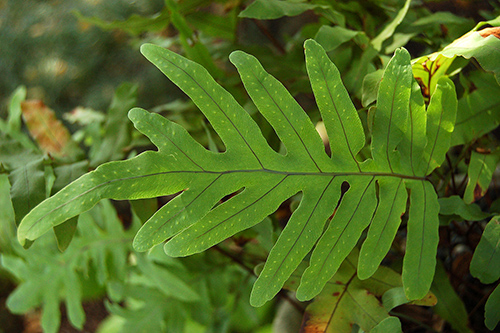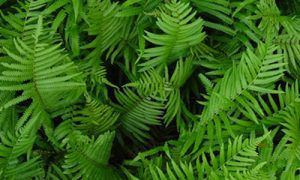Contents
The calaguala plant is a fern native to America and was highly valued by the Mayan people long before the arrival of the Spaniards. From the 17th century onwards, it has been used in Europe, where it had been supposed to have many medicinal uses, including healing syphilis. We know its actual healing properties, which are listed below.

Calaguala Plant Scientific Facts
- French: Polypode calaguala.
- Spanish: Calaguala.
- Environment: Common in Central and South America, this plant does not grow in Europe. Calaguala grows in moist and shady areas, especially as a parasite plant, on the trunk of some trees.
- Description: Fern of the Polypodiaceae family, with coriaceous oval-shaped leaves. The rhizome (set of underground stems) is thick and is covered with yellowish or reddish scales.
- Parts of the plant used medicinally: The rhizome and the root.
Healing Properties and Indications

The most outstanding uses of the rhizome and the root of calaguala are:
- Sudorific: It increases the production of sweat.
- Uricosuric diuretic: It promotes the elimination of uric acid.
- Depurative.
- Stimulant and regulator of cell immunity: Its most important application is for skin rashes and autoimmune ailments (rheumatic arthritis, cholagenosis, psoriasis, dermatogis, etc.). At present, research is being conducted on this issue.
How to use Calaguala
- Decoction with 30-40g of ground root and rhizome per liter of water. Boil for 10 minutes. Drink two or three cups daily.
Similar Plants

Polypody Species: Polypodium leucatomos Poir is a fern similar to calaguala, whose extract, called anapsos, is part of the composition of several medicines used for psoriasis and atopic dermatitis. In Mexico, a similar species, Polypodium feuillei Bertero, has the same properties as calaguala.
Tepezcohuite: In Mexico, another plant is also beneficial against skin afflictions, known as Tepezcohuite (Mimosa tenuiflora L.). It is a powerful skin and wound healer that activates tissue regeneration. Moreover, it has antibiotic and fungicidal properties.
The pharmaceutical industry prepares creams and shampoos with the extract of this bark, which is externally used for skin burns and sores and hair and skin beauty.
DISCLAIMER: All content on this website is presented solely for educational and informational objectives. It would be best to not rely on the information provided as a replacement for advice, diagnosis, or treatment from a qualified medical expert. If you are pregnant, nursing, or have any preexisting medical concerns, you should talk to your doctor before using any herbal or natural medicines.
REFERENCES
- George D. Pamplona-Roger, M.D. “Encyclopedia of Medicinal Plants.” George D. Pamplona-Roger, M.D. Encyclopedia of Medicinal Plants. Ed. Francesc X. Gelabert. vols. 2 San Fernando de Henares: Editorial Safeliz, 2000. 724. Print. [calaguala plant]
- PubMed: https://pubmed.ncbi.nlm.nih.gov/
- Google Scholar: https://scholar.google.com/
